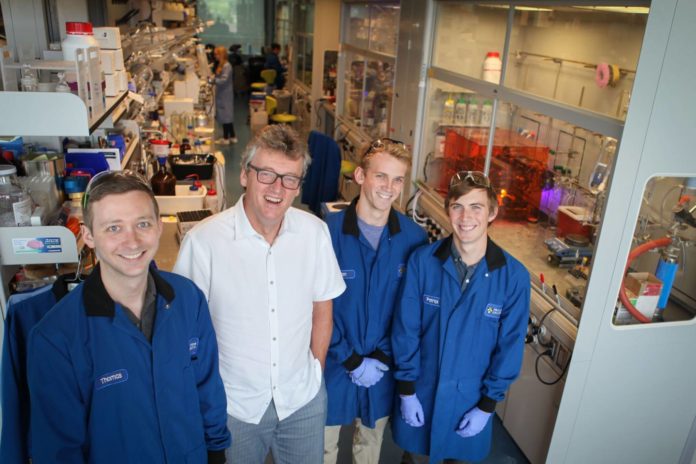Scientists at the Princeton University in the David MacMillan’s lab have come up with a revolutionary new way to bond molecules that could fundamentally accelerate the medication advancement process. They originally have invented new chemical reactions that are expected to influence medicinal chemists.
David MacMillan said, “This new work highlight approaches to tremendously streamline ways to bond molecules, and also make new molecular couplings — it’s like Legos. Comparing the method to replace a lone carpenter with a whole construction crew, I can say, not only house, the drug also- be built faster, but it extends the possibility of building new and different types of “houses” in the future.”
Scientists here used a combination of light-driven hydrogen atom transfer and nickel catalysis. This outlines an imperative and already slippery engineered change, making ready for the advancement of related chemical responses.
Scientists at last found that their work provides a direct route to react with carbon-hydrogen bonds that truly lack any adjacent ‘activating’ functionality. This empowers coordinate derivatization of molecules at positions that would be totally lifeless under beforehand distributed conditions, additionally extending the scope of fascinating, complex particles organic chemists can make from straightforward beginning materials in a single step.
Patrick Sarver, a graduate student and one of the paper’s co-authors said, “This should enable medicinal chemists to explore molecules that they might otherwise be unable to make. Some of which could eventually enter clinical trials and ultimately become drugs.”
“First, from a synthetic standpoint, our new reaction provides access to a range of complex, medicinally relevant products that are currently extremely challenging to access. This has the power to enable medicinal chemists to generate a wide range of closely related compounds on scaffolds that they might otherwise be unable to investigate and could thus help to speed up the long and difficult process of drug discovery.”
“By directly reacting with an unactivated carbon-hydrogen bond, we remove the need for those additional ‘prefunctionalization’ steps, thereby allowing chemists to take an extremely simple starting material and immediately and selectively introduce complexity. The carbon-hydrogen bonds functionalized in our reactions are, fundamentally, the ideal coupling partners: they are both widely abundant and unreactive under almost all reaction conditions.”
The work of MacMillan’s research group, documented in a paper published Aug. 2 in the journal Nature.
The co-authors of the study include Ian Perry, Thomas Brewer, Patrick Sarver, Danielle Schultz, Daniel DiRocco and David MacMillan.
